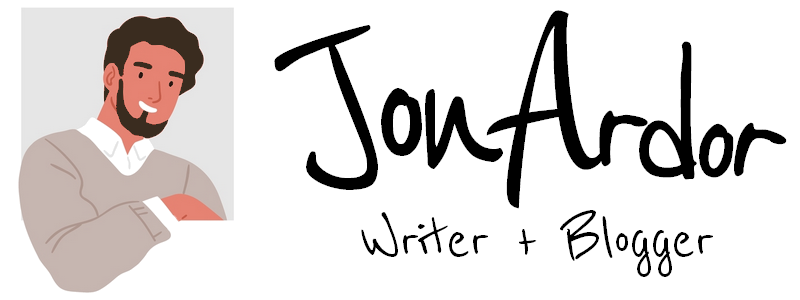5 Quick Steps for How to Disinfect an Office
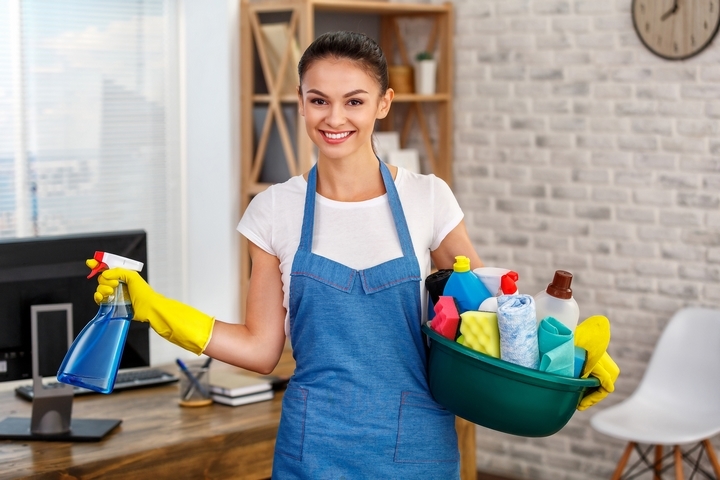
Your office not only needs to be cleaned regularly; it needs to be disinfected as well. While cleaning an office will help ensure it looks tidy and feels comfortable for your employees, clients, and guests, disinfecting it ensures you’re not unknowingly spreading germs and causing sickness.
You’ll need to do more than dust and vacuum to keep employees safe. Here are steps to disinfect an office.
Step #1: Use the Right Cleaning Supplies
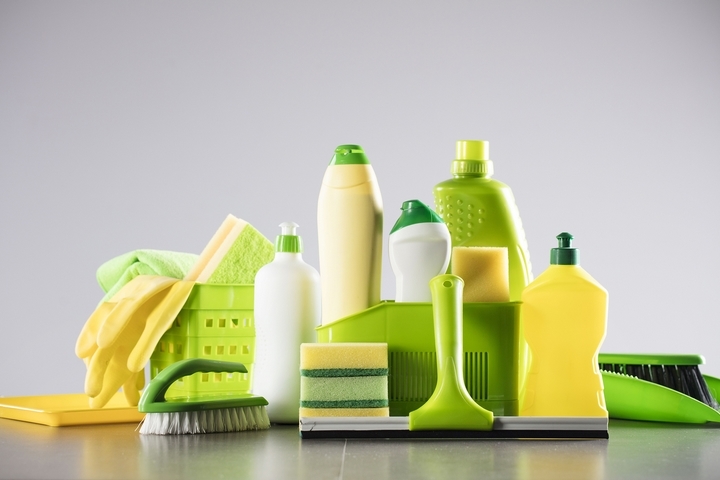
Not all cleaning supplies will also disinfect for germs. Cleaning and disinfection are two distinct routines. Cleaning removes dirt and impurities from surfaces, such as washing dishes, cleaning a surface with soap to remove food particles, or vacuuming. Conversely, disinfection eliminates harmful germs, such as viruses and bacteria, from surfaces. Wiping a surface with bleach, for example, is an act of disinfection.
Both are important and necessary in an office. But they are not the same thing. Cleaning alone will not keep employees safe from germs that spread illnesses. Generally, you should clean to remove dirt and debris from surfaces before disinfecting to destroy the germs underneath that dirt.
You may, however, be able to find a cleaner that also includes a disinfectant. This means you’ll be able to cut down on the time it takes to clean and disinfect your office. You’ll need to read the label to ensure it contains a high enough quantity of the disinfectant to be effective, though.
Disinfectants include the proper concentration of chlorine, hydrogen peroxide, detergent, iodine-based antiseptic or alcohol to effectively kill germs as you clean. You’ll also want to ensure your cleaners won’t damage office equipment. Use gloves to reduce your risk of exposure when disinfecting.
Consider leaving packs of antibacterial, alcohol-based disinfecting wipes in the office for employee access. They’ll appreciate using these wipes whenever needed, such as wiping down door handles in communal areas or even toilet seats before use.
Step #2: Disinfect Consistently
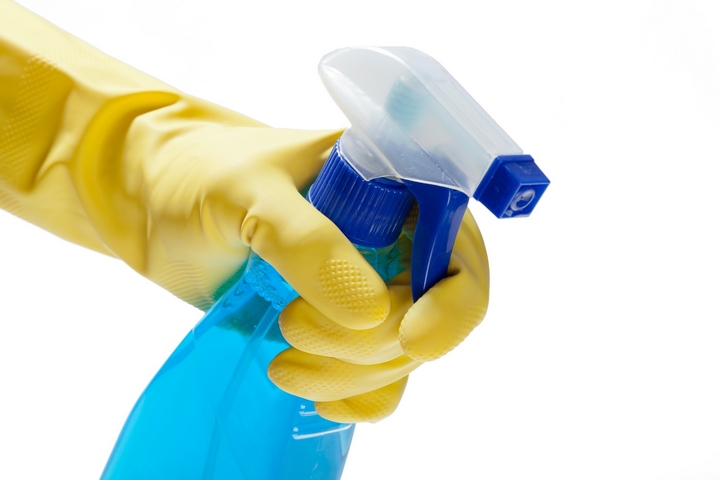
Employees, clients and others enter the office daily and touch virtually everything. And, every day, all those things become potentially contaminated with germs. Influenza viruses can infect a person 2-8 hours after germs have been deposited on a surface. That’s why you need to disinfect consistently to keep illnesses at bay.
No office will stay free of germs for long. Make it a practice to sanitize and disinfect daily.
Step #3: Identify High-Touch Areas
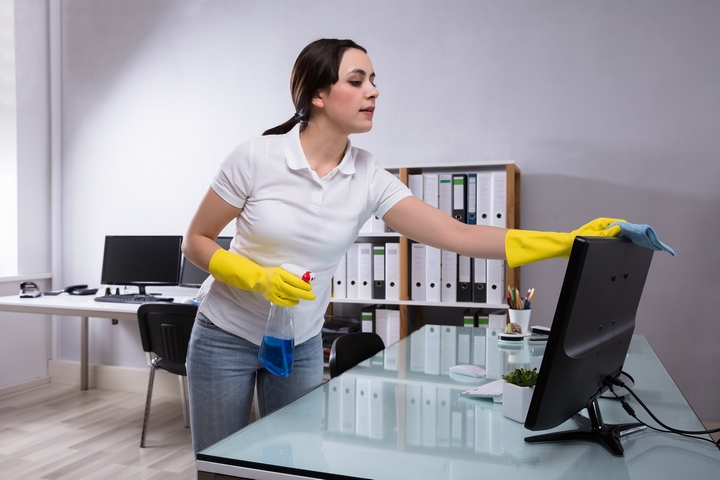
Disinfecting everything in the office every single day may seem like too much. After all, who has the time? The good news is that you may not need to disinfect everything in the office as the shop is closed every night.
Depending on the size of the office and how many people are coming in daily, you may be able to get away with focusing on high-touch areas for daily disinfection. These are areas that are used more often than everything else.
Consider where people commonly gather at the office, including meeting rooms, reception areas, bathrooms, and lunch rooms.
Step #4: Identify High-Touch Items
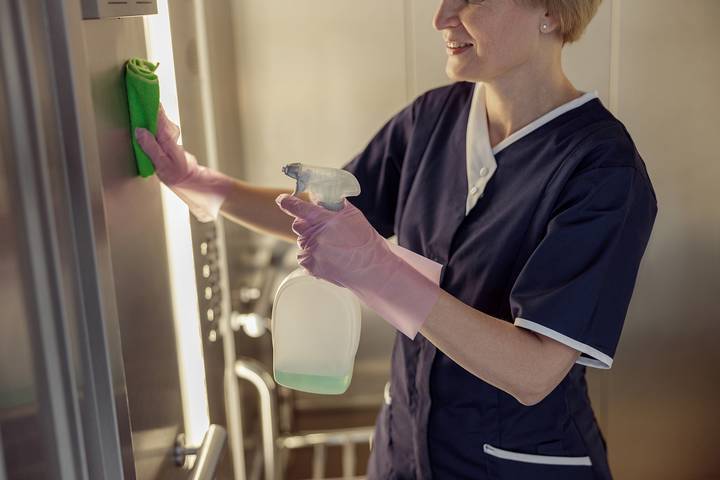
Then, think about high-touch items. If your printer doesn’t get much use weekly, you don’t need to disinfect it as often. Yet, those doorknobs and keyboards that are touched every day, often by multiple people – will need special daily attention.
Pay close attention to where employees and clients gather and what they touch daily 0, and make notes. Some common high-touch office areas include tables, door handles, desks, phones, keyboards, faucets, toilets, and light switches. Don’t forget about reusable items like pens, pencils, and folders.
Step #5: Follow Best Practices
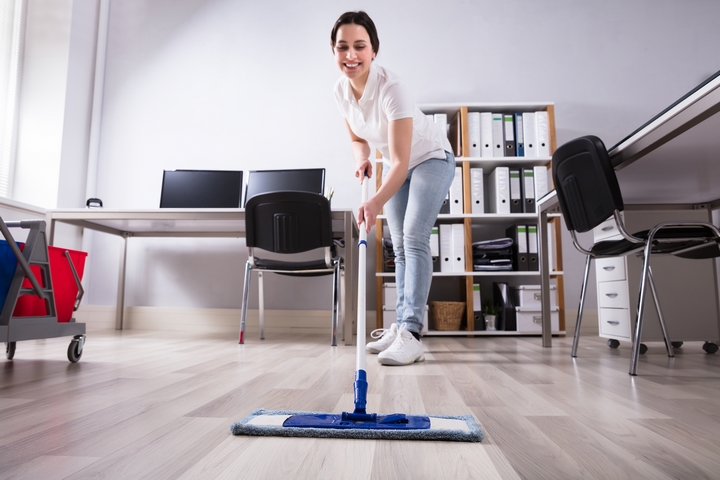
There is a right way and a wrong way to disinfect an office. For example, wipe down all surfaces in one direction only. Do not go back over the area you just cleaned in the opposite direction, or you’ll simply be spreading the germs you removed right back where you cleaned them up.
Another best practice is to colour-code your cleaning clothes so you don’t clean keyboards with a cloth used to clean sinks and toilets, for example.
A damp cleaning method can ensure you’re not spreading germs to other areas as you clean. Dusting and sweeping can simply move around germs rather than effectively disinfect surfaces.
Step #6: Leverage Office Cleaning Services
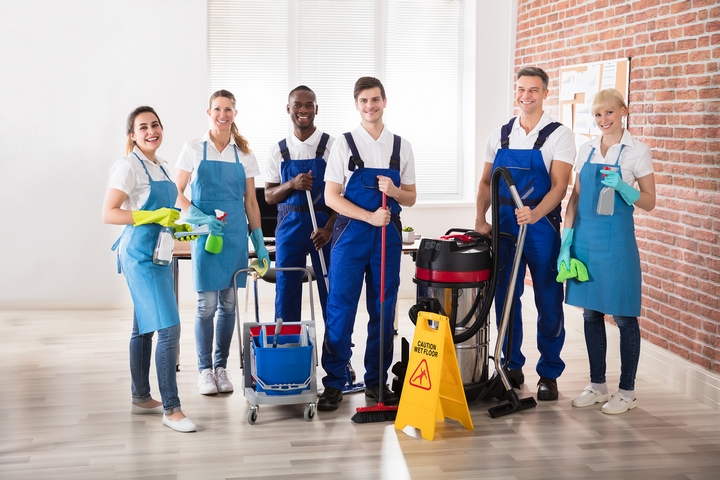
Using the right disinfectants, following best practices, and keeping up with a daily disinfecting protocol can be a lot. That’s why many office managers leverage corporate cleaning services.
Consider getting a nightly cleaning service for a minor cleaning and disinfecting routine. This would include disinfecting the high-touch areas and items you’ve identified. Then, commit to a more thorough deep cleaning and disinfecting session weekly or bi-weekly. For example, this can include disinfecting windows, walls, and storage rooms.
This ensures professionals with the right knowledge and tools do the work correctly. And it ensures someone can take the necessary time every night and week to thoroughly disinfect your office. And you can rest assured that your office is clean of germs, viruses, and illnesses.
